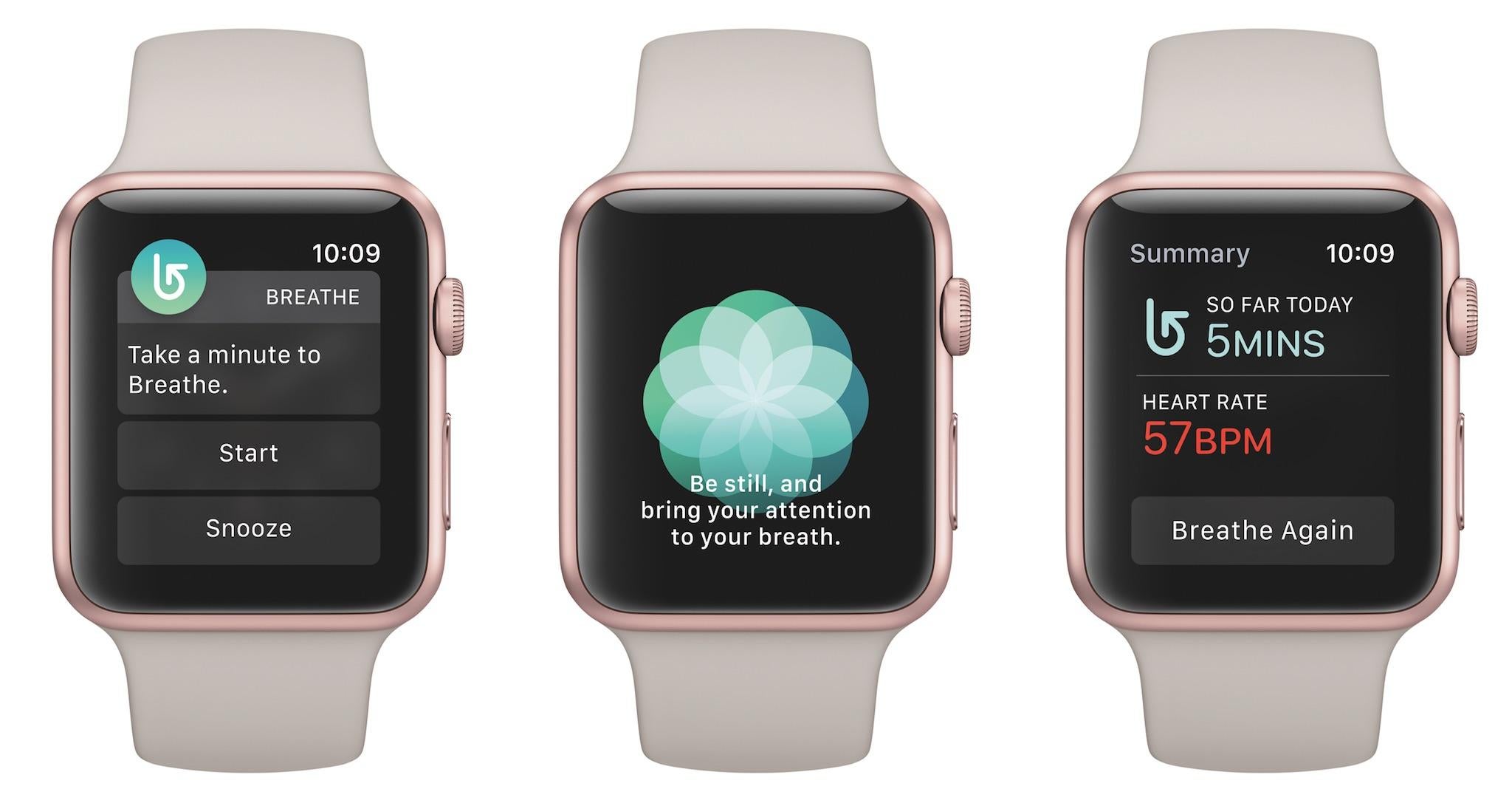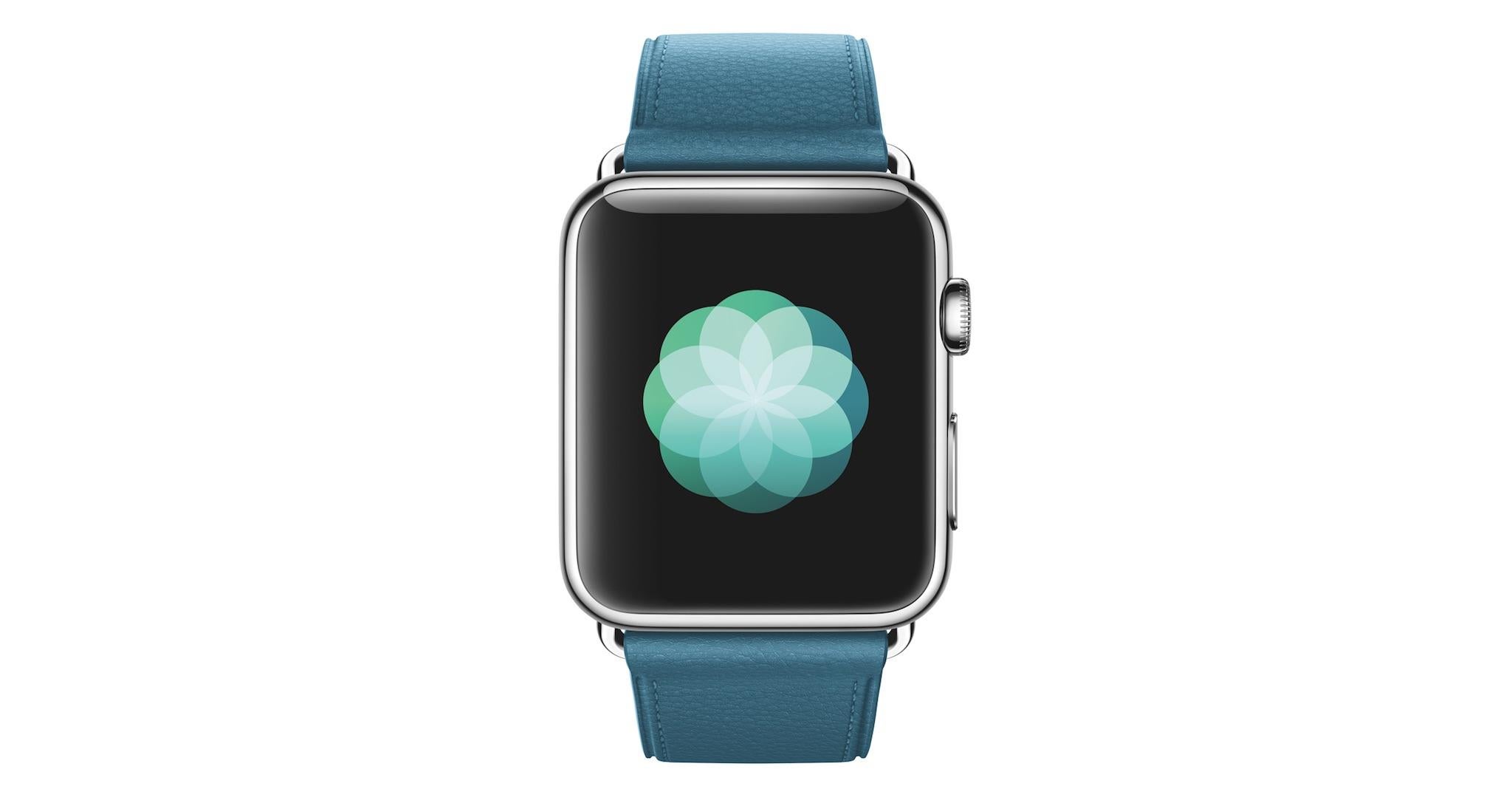Apple Watch Breathe app: How new operating system could make wearers better people
Breathing is key to a sense of calm, and the new app intends to make you remember that

Your support helps us to tell the story
From reproductive rights to climate change to Big Tech, The Independent is on the ground when the story is developing. Whether it's investigating the financials of Elon Musk's pro-Trump PAC or producing our latest documentary, 'The A Word', which shines a light on the American women fighting for reproductive rights, we know how important it is to parse out the facts from the messaging.
At such a critical moment in US history, we need reporters on the ground. Your donation allows us to keep sending journalists to speak to both sides of the story.
The Independent is trusted by Americans across the entire political spectrum. And unlike many other quality news outlets, we choose not to lock Americans out of our reporting and analysis with paywalls. We believe quality journalism should be available to everyone, paid for by those who can afford it.
Your support makes all the difference.This autumn, when the new software for the Apple Watch (watchOS 3) is launched, along with a new interface and extra watch faces there’s an app called Breathe.
Unlike the macOS and iOS 10 releases which have public beta programs, watchOS is for developers only, but the Independent recently tried out the new app behind closed doors.
Breathe is an app that continues Apple’s focus on health and fitness, an emphasis that the Watch front and centre with its Activity and Workout apps to count your steps and calories during the day.
Apple CEO Tim Cook has said, “One day, we will look back and wonder: how can I ever have gone without the Watch? Because the holy grail of the Watch is being able to monitor more and more of what's going on in the body.”
Breathe aims to improve your health, reduce tension and even improve your sleep, in just 60 seconds.
Breathing, we know, is a key to a greater sense of calm. This app is simple enough. It encourages you to breathe in and out slowly for a minute. When you open the app, the words you see tell you what to expect: “Quiet your mind. Relax your body. Be in the moment.” As Brits, we may prefer the first word to be quieten, but you get the idea.
You choose the time you want to breathe for, with a default of one minute, though can do more. When you start the app it stays dark for a second or so to let you focus. Then a circle of blue-green petals appear, growing as you inhale, shrinking as you breathe out.
The Apple Watch also has a haptic response. This is the subtle vibration the Watch can make, which really feels like someone is gently tapping your wrist. The tapping measures out the inhale, falling silent as you breathe out.
At the end of the minute the app shows your heart rate. When I tried it, I genuinely felt calmer and more relaxed. My heart rate had dropped, too, to 54 beats per minute.
I talked to Dr John Denninger, Director of Research at Benson-Henry Institute for Mind Body Medicine at Massachusetts General Hospital about the science the app taps into.
“A lot of this goes back to Dr Herbert Benson’s work in the late sixties and seventies which showed that techniques involving breathing do bring about a physiological state that is opposite to the stress response. That’s where your heart beats fast, where you tremble, the fight-or-flight stuff that gets you away from the proverbial tiger. There seems to be an ability of the body to enter an opposite state when you focus on breathing.”

But is a minute really enough? “We have a number of programmes for stress management and one element is the mini relaxation that takes a minute or so to do a breathing exercise. It’s helpful to use it during the day to stay mindful of stress. For instance, there’s a group of medical professionals at Massachusetts General Hospital doing palliative care, dealing with people at the end of their lives. It’s difficult work to do. We ran a program for these doctors and we recommended 20-minute sessions once or twice a day, but the group found the most helpful thing was to do these mini-sessions before going in to see a patient.”
That fight-or-flight response was there for a reason, surely? Dr Denninger pointed out that we don’t spend as much time running from tigers these days. “If there are negative health results from the fight-or-flight response the body doesn’t care, it’s about saving your life right now. But many of the threats we used to face no longer apply. So stress responses don’t need to be active – a nasty email from the boss can cause the same response, but you don’t need it. And in the long term, chronic stress can cause health problems. Any way to lower the body’s response to chronic stress is good. Ultimately it may lead to greater resilience.”
I also talked to Jay Blahnik, a fitness guru and Apple’s Director of Fitness and Health technologies, about the app. “Taking a moment to do some deep breathing will feel good, will quiet your mind, help relax your body and better manage everyday stress.”
The app will be free when it arrives with the next update of software for the Apple Watch, in the autumn.
The Apple Watch already has a somewhat addictive Activity app. It consists of three rings with different meanings and the aim is to close each ring every day.
There’s red, which involves hitting your chosen number of active calories, green, which completes when you’re briskly active for at least half an hour and blue, which responds to your standing up and moving for at least a minute each hour so you’re not sitting all the time. Closing the rings has become a habit for many Watch users, apparently.
Breathe could be another winner, a little, quickly habitual revelation that subtly makes a difference.
Join our commenting forum
Join thought-provoking conversations, follow other Independent readers and see their replies
0Comments